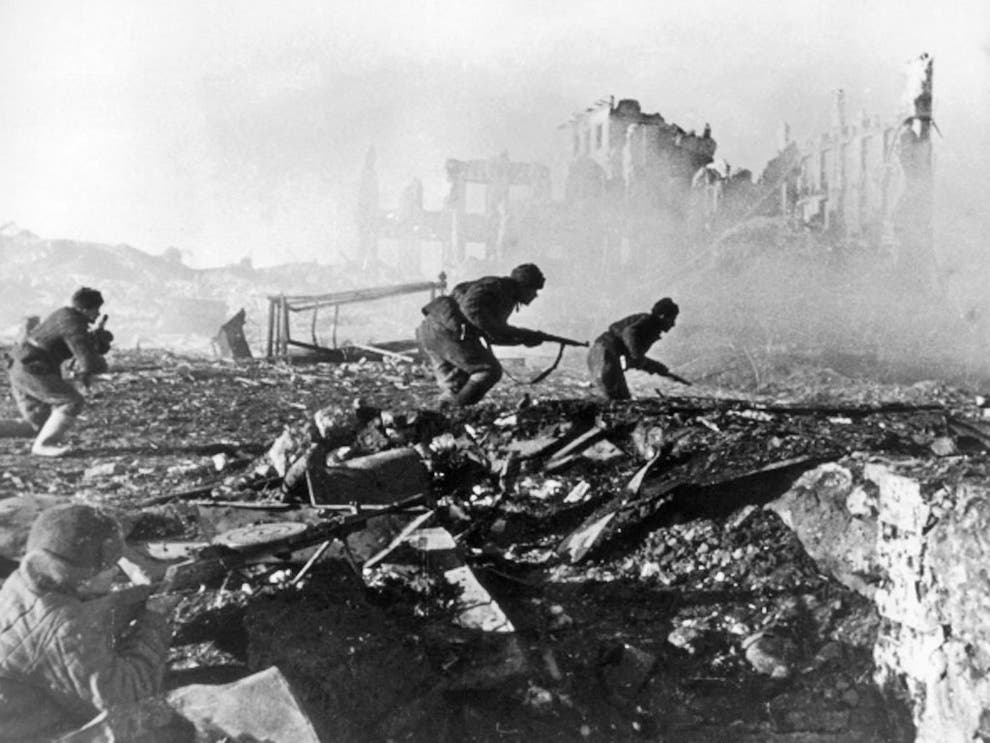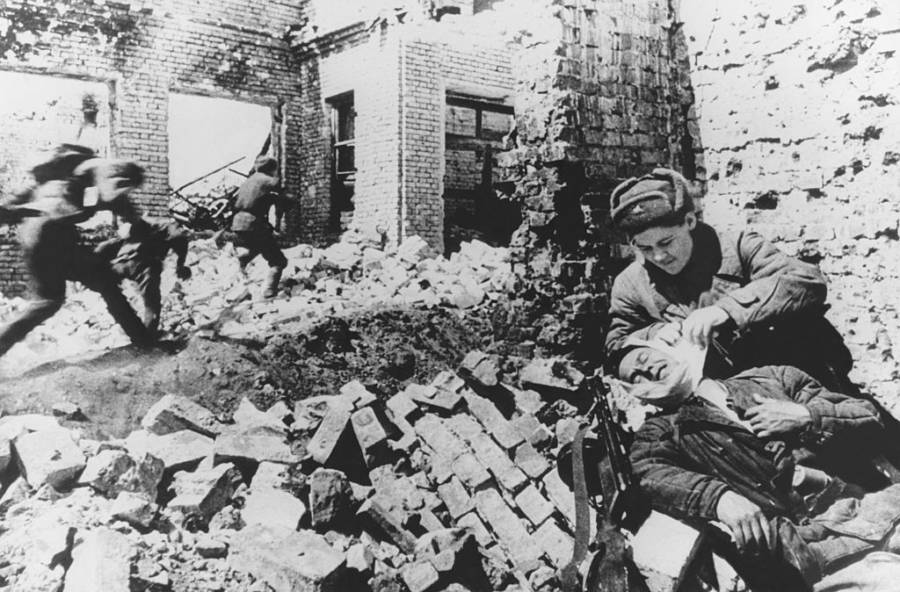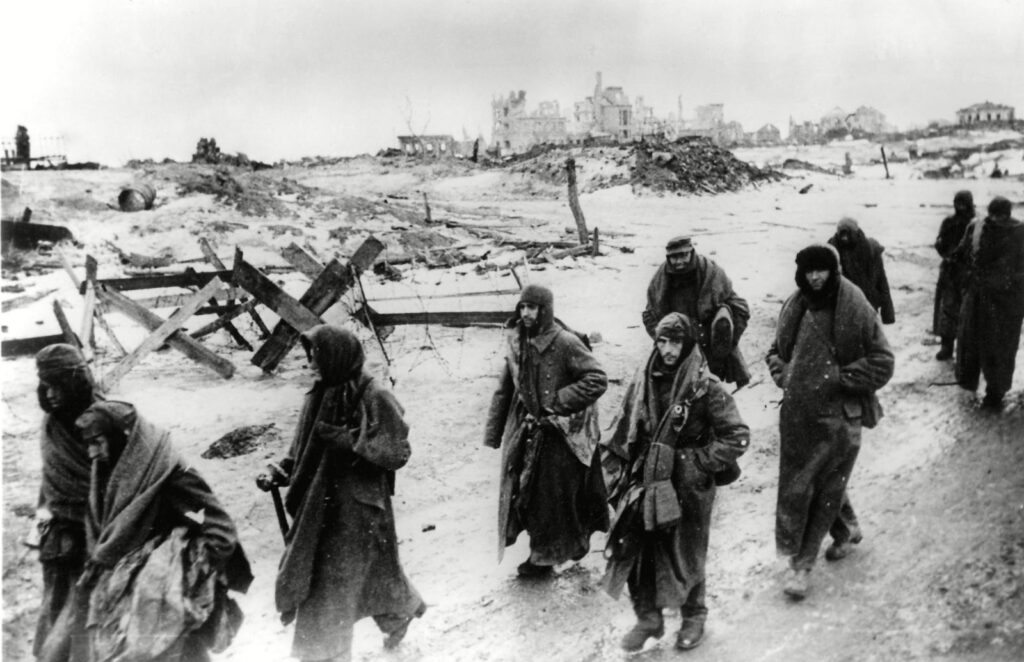The Battle of Stalingrad was a brutal military campaign fought between the Soviet Union and the Axis powers led by Nazi Germany that began on the 23rd August 1942, and lasted until 2nd February 1943. The battle is recognized as one of the longest, largest and bloodiest battles in the history of warfare, with a total of nearly two million casualties. Both sides suffered enormous casualties, but Germany was ultimately defeated, bringing an effective end to the Nazi invasion of Russia. With no further major German victories on the Eastern front for the rest of the war, this the Battle of Stalingrad was a turning point of WWII.

Background
Following the last-minute halt of the German advance on Moscow by the Red Army, Hitler understood that he had insufficient numbers to launch an all-out assault along the front. Therefore, he decided to refocus German attacks on the oil fields of the Caucasus, and then drive on to the Volga. Operation Blue began at the end of June 1942 and surprised the Russians who fully expected a renewed Nazi attack on Moscow. Within two weeks, Germany’s Wehrmacht forces advanced more than 300 miles.
Hitler, increasingly ordering military operations in Berlin, decided to switch up the plan of action. For both symbolic and strategic reasons, the Sixth Army was ordered to advance towards the city of Stalingrad. Serving as an industrial center in Russia that produced artillery for Russian troops, Stalingrad was strategically vital for the Germans. The city was also located on the Volga River which served as an important shipping route. Additionally, with the city named after Soviet ruler Josef Stalin, it held immense propaganda value.
As Hitler announced that upon occupying Stalingrad, all the male residents of the city would be killed and all the women deported, it became apparent that this battle was going to be particularly bloody and hard-fought. Stalin ordered all Russians strong enough to hold a rifle to partake in defending the city.
On 23rd August 1942, the 6th Army of the Wehrmacht launched their operation.
The Battle Commences
With a series of brutal attacks in the north of Stalingrad, Russian forces were initially able to slow the advances of the German Wehrmacht. Despite losing more than 200,000 men, the Russians were successful in holding off German troops.
With an understanding of Hitler’s motives, the Russians had already shipped out the majority of the city’s cattle and grain. However, the city’s 400,000 residents were not evacuated as the Russian leadership believed that their presence would encourage the Russian army to fight harder knowing that they were defending civilians.
Within just a few days of the attack, the German air force had extensively bombed the city, rendering the Volga River impassable to shipping and several Russian commercial vessels had been sunk. Throughout the duration of the assault, the Luftwaffe conducted dozens of devastating air strikes on Stalingrad.
By September, the skies over Stalingrad were in control of the Luftwaffe, and the Russians were facing a desperate situation. City workers who were not involved in weapons production were ordered to fight, often without firearms of their own. Women were also required at the front lines to dig trenches. Despite this, the Russians continued to suffer heavy losses. By the fall of 1942, Stalingrad was obliterated.

“Not a Step Back!”
Despite heavy losses and continuous devastating attacks on the city, Stalin issued Order No.22, with its famous command: “Not a step back!”, ordering his forces not to retreat. Troops who surrendered would face a trial resulting in possible execution.
Outnumbered with less than 20,000 soldiers in Stalingrad and fewer than 100 tanks, Soviet generals finally began to send back up into the city and surrounding areas. Fierce battle commenced in the streets of Stalingrad, with snipers from both sides positioned on the rooftops of city’s buildings. Russian troops were organized in the mountains from where they launched a counterattack, called Operation Uranus.
Even though the Russian forces sustained huge casualties, by late November 1942, they successfully formed a defensive line around the city, trapping almost all the 30,000 German and axis troops in the 6th Army. With the Russians limiting access to supplies, the trapped German troops slowly starved and weakened as the harsh winter began to set in.
Russian Winter Begins
The onset of the harsh Russian winter meant that the Germans were at a huge disadvantage as they were not used to fighting in such conditions. Russian forces strengthened their defensive around the city, further cutting off the Germans from essential supplies. The Axis forces, mainly Germans and Italians were significantly weakened. German generals abandoned all efforts to rescue the remaining trapped troops, yet Hitler still refused to surrender, despite ammunition running out and his troops slowly starving to death.

The Battle Ends
By February 1943, Russian forced had regained the city of Stalingrad and captured almost 100,000 German troops. The majority of the captured soldiers starved to death in Russian prison camps.
The loss at Stalingrad put the Axis powers now on the defensive and was the first failure of the war to be publicly addressed by Hitler. Many historians consider the Battle of Stalingrad to be a crucial turning point in World War 2, marking the beginning of the path to victory for the Allied forces of Russia, France, Britain and the United States.

